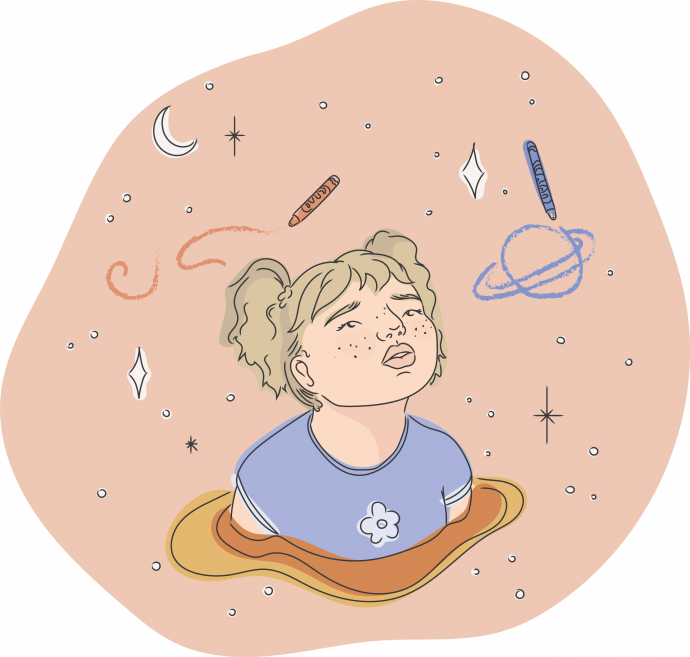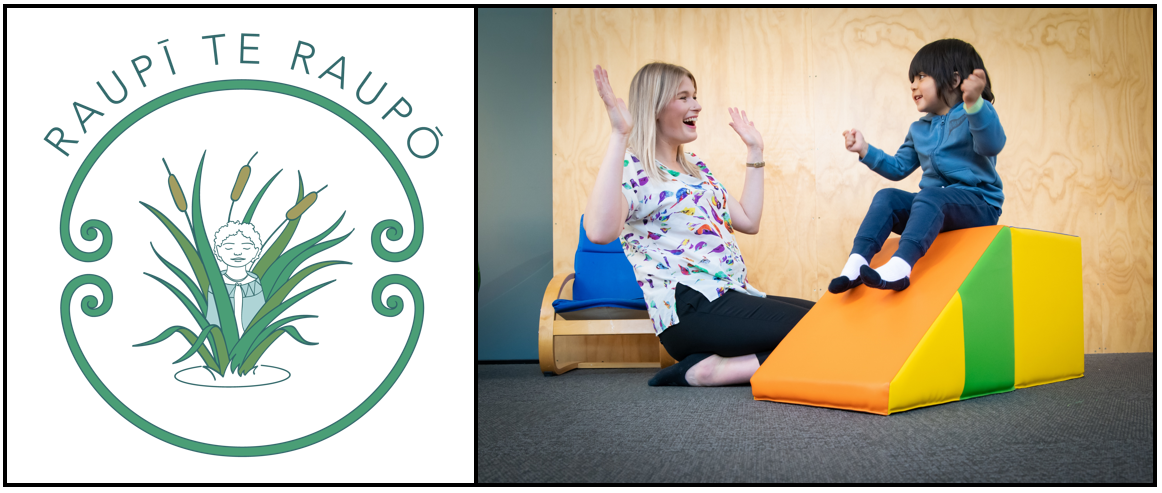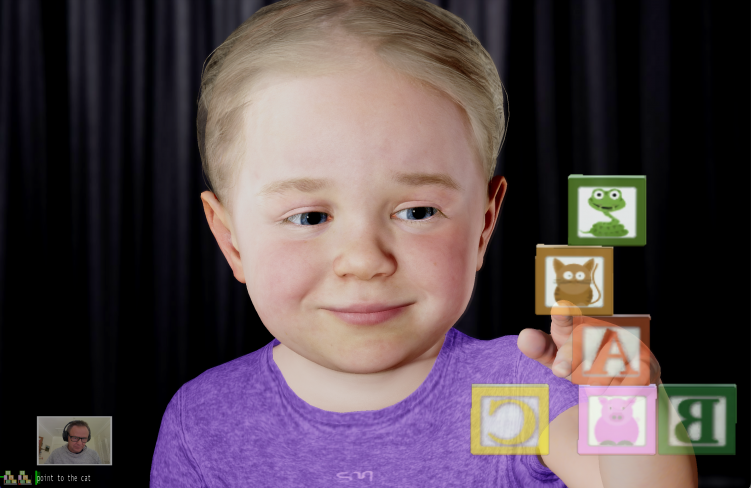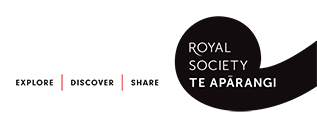Research
Published 31 March 2025A Difference, Not a Deficit – Changing Attitudes to Autism in Aotearoa

To celebrate Autism Acceptance Month this April, I sat down with Dr Hannah Waddington (Te Herenga Waka ― Victoria University of Wellington) to talk about her neurodiversity-affirming research on support for autistic children in Aotearoa
Dr Hannah Waddington is an educational psychologist who specialises in providing support for autistic children and their whānau. Today, she has kindly made time to speak to me over Zoom. I disclose my recent diagnosis of autism (a motivating factor in seeking her out) and her response tells me she understands – “it’s a journey”. It certainly is.
Dr Waddington is the recipient of a Rutherford Discovery Fellowship (awarded 2022) and Marsden Fast-Start grant (awarded 2024). We spent an hour discussing these projects, and how her understanding of autism has changed over time.
Dr Hannah Waddington (photo supplied)
Autism and the neurodiversity movement
Like most working in her field, Hannah was originally trained to think of takiwātanga, or autism, as a problem to be solved. This perspective is baked into the diagnostic description of autism - it is plainly labelled as a neurodevelopmental disorder, characterised by deficits in social communication and interaction, difficulties with change and transitions, and unusual interests and sensory preferences. Autistic people certainly seem worse off, on average, than their allistic (non-autistic) peers according to several important metrics; they experience poorer educational outcomes, higher rates of unemployment, and are more at risk of mental health difficulties such as anxiety and depression.
After seeing some of her whānau diagnosed, Hannah devoted herself to learning how to best support autistic children and their whānau. Her early thinking was focused on helping autistic children to live up to allistic expectations of behaviour - something that was challenged by the autistic advisory groups that she consulted. “As a researcher, when you get feedback about things like this, you have the choice of listening or not listening.” Hannah chose to listen, and has since become a vocal advocate for the neurodiversity movement.
The neurodiversity movement argues that neurological differences like ADHD and autism should be seen as natural differences in the way our brains work, rather than disorders defined by their deficits. Many of the challenges and poor outcomes experienced by neurodivergent people do not stem directly from their neurodivergent traits, but instead from the difficulty of navigating a world designed for neurotypical people. From this viewpoint, autistic people do not have deficits in social communication and interaction – they just communicate in a different way than allistic people do.
Lack of understanding and acceptance around different communication styles can then lead to autistic people being isolated socially, neglected in school, and overlooked for employment opportunities. Likewise, many autistic people experience sensory stimuli differently than allistics; for example, they may be more sensitive to noise or light, leading them to avoid or become distressed in spaces where these stimuli are too intense. Hannah, and other advocates for neurodiversity, ask why we should expect autistic people to swallow their discomfort and mask their authentic selves to make allistic people comfortable, rather than looking for ways in which society can be more accepting and accommodating of difference.
Raupī te Raupō: Neuro-affirming support for autistic children and their whānau
Hannah’s Rutherford Discovery Fellowship aims to implement this way of thinking in the form of a new, neurodiversity-affirming support programme for autistic tamariki and their whānau. Designed in partnership with autistic and Māori advisory groups, Raupī te Raupō encourages whānau and communities to embrace autistic children as they are, instead of forcing them into a neurotypical mould. Through a series of sessions with trained coaches, participants in this programme are empowered to understand, support and advocate for their tamariki in ways that affirm their neurodivergence.
This process involves tackling some deeply ingrained stereotypes and misconceptions about autism. For example, many people believe that autistic people don’t desire relationships and connection. In most cases, they do – “it might just look different”, explains Hannah. When a parent asks how they can get their autistic child to make eye contact with others, Hannah hears the underlying meaning: I want my child to be able to connect with people and feel understood. Rather than forcing their child to make eye contact, which might be uncomfortable and discourage them from socialising, parents can learn and teach others to embrace the ways in which their child actually enjoys connecting.

Raupī te Raupō encourages whānau and communities to embrace autistic children as they are, instead of forcing them into a neurotypical mould (illustration credit: Waiaria Willoughby-Viljoen, photo supplied)
As part of the roll-out for Raupī te Raupō in the Wellington region, Hannah and her team provided training to help teachers and health professionals identify signs of autism in young children. Unusually, Raupī te Raupō has been made available to children who are yet to receive an autism diagnosis. Hannah points out that this kind of pre-diagnostic support is “quite new and still pretty rare. These parents don’t even know if their child will necessarily go on to get a diagnosis”. These steps are meant to combat one of the biggest hurdles for implementing support for autistic children in Aotearoa - delays in identifying and diagnosing autism. Signs of autism in young children are frequently missed by the adults around them, and whānau may face prohibitive wait-times and costs to access official diagnoses. The upshot of this is that many children aren’t diagnosed until they reach school, even though signs of autism can often be observed in the first year of life. Raupī te Raupō offers whānau a chance to access support early, when it can be most impactful for them.
Feedback from the pilot of Raupī te Raupō has been positive, and the research team is now testing how it performs compared to typical community support. Hannah is sure the programme will continue to evolve. It’s important to her that it is feasible for busy families, and that the content is appropriate for the needs of the community, including whānau Māori. Key collaborator Dr Jessica Tupou (Ngāi Tahu, Ngāti Mamoe) has been central to ensuring that Raupī te Raupō is culturally responsive. Jessica co-facilitated the Māori advisory group which helped to shape the whanonga pono (guiding values) of Raupī te Raupō. Hannah notes that these core Māori values, such as manaakitanga (upholding the mana of others) and tuakiritanga (knowing and being proud of who you are), align well with the principles of the neurodiversity movement. The name of the programme was gifted by Associate Professor Mere Skerrett (Ngāi Tahu, Ngāti Rakiāmoa, Ngāti Ruahikihiki, Ngāti Māhuta, Ngāti Unu, Ngāti Maniapoto, Ngāti Pikiao, Ngāti Te Rangiunuora, Ngāti Pūkeko), and reflects the need to nurture/cherish (rāupi) our tamariki, as symbolised by the taonga bullrush (raupō). The team have recently received funding to trial the programme with Ngāti Toa; in the long-term, Hannah hopes to get funding to roll it out nationwide.
BabyX and the power of positive framing
Working on Raupī te Raupō has changed the lens of Hannah’s research, and led her down some unanticipated paths. More and more, she has become fascinated by how the framing of autistic people and traits can change our responses to them. Her Marsden Fast-Start project, due to start in July this year, will zero in on this question.
In the first part of this project, she will work with Associate Investigator Professor Annette Henderson to test how positive or negative framing of autistic traits alters the interaction between study participants and a computer-generated, interactive child known as “BabyX”. BabyX will be modified to display some behaviours commonly associated with autism (such as engaging in reduced eye contact and increased repetition/mirroring of speech and behaviour). Participants will be told either that “BabyX has trouble interacting with others” or that “BabyX communicates and interacts in their own unique way”. The research team will observe how participants respond to BabyX during interactive play, and then talk to them about their feelings towards BabyX. This research avenue is “totally new and unexpected” for Hannah, and marks her first foray out of applied and into experimental research.

The research team will observe how participants respond to BabyX during interactive play (photo supplied by Professor Annette Henderson)
The Marsden will also investigate how parents’ attitudes towards autism change after completing Raupī te Raupō. “There’s not that much research out there on what affirming support actually looks like”, Hannah explains. “What happens when we aim to change the attitudes and behaviours of people around an autistic child, rather than the child themselves?”.
The question is well worth musing on as we enter Autism Acceptance Month in Aotearoa. Many autistic people – including myself – have learnt from a young age how to “mask” their autistic traits in order to meet neurotypical expectations. Some mask so effectively that they evade diagnosis until adulthood. With greater understanding and acceptance of neurodivergent lives, we can encourage more autistic adults to “unmask” and live authentically, and – hopefully - prevent autistic children from ever reaching for the mask in the first place.
Additional information
Where can people go to learn more about autism and neurodiversity?
Hannah suggests checking out resources provided by Autism NZ and Altogether Autism. She works very closely with Autism NZ, and knows that their resources are neurodiversity-affirming and are created by or alongside autistic people.
You may also want to check out the video series Autism in Aotearoa, which Hannah worked on as part of a collaboration between Te Herenga Waka ― Victoria University of Wellington and Autism NZ. This series features autistic adults and parents of autistic children speaking about their experiences.
How can I celebrate Autism Acceptance Month?
For Autism Acceptance Month in April, you can take part in Autism NZ’s “Hoods Up, Volume Down” initiative. This initiative calls for businesses, schools and other organisations to engage in a national “quiet hour” at 10am on Wednesday the 2nd of April to promote acceptance of autism. You can find suggestions on how to organise a low sensory quiet hour at your organisation here. To support Autism NZ, you can buy a Hoods Up, Volume Down hoodie or donate to them directly.
What about those who are wondering if they or their child might be autistic?
Autism NZ has a guide specifically for navigating diagnosis. If your child is under 2.5 years old, Hannah would also recommend ASDetect – this is a free app you can download showing what typical versus atypical development looks like, which might help you to decide if it’s worth pursuing a diagnosis.
How can I access Raupī te Raupō?
Raupī te Raupō is administered by Autism NZ and is offered as a free early support service for whānau of autistic children in the Wellington region. You can read more and register your interest here.
Authors
This article was written by Olivia Tidswell, Kaiarotake Rangahau Research Assessor at the Royal Society Te Apārangi, with input from Dr Waddington and other Royal Society kaimahi.
RESEARCHER
Dr Hannah Waddington
ORGANISATION
Te Herenga Waka ― Victoria University of Wellington
FUNDING SUPPORT
Rutherford Discovery Fellowship and Marsden Fast-Start
CONTRACT OR PROJECT ID
RDF VUW2201: "Transforming the clinical pathway for young autistic children and their whānau in Aotearoa New Zealand" & Marsden VUW2405: "A difference, not a deficit: Exploring the effects of positive framing on attitudes towards autism"
